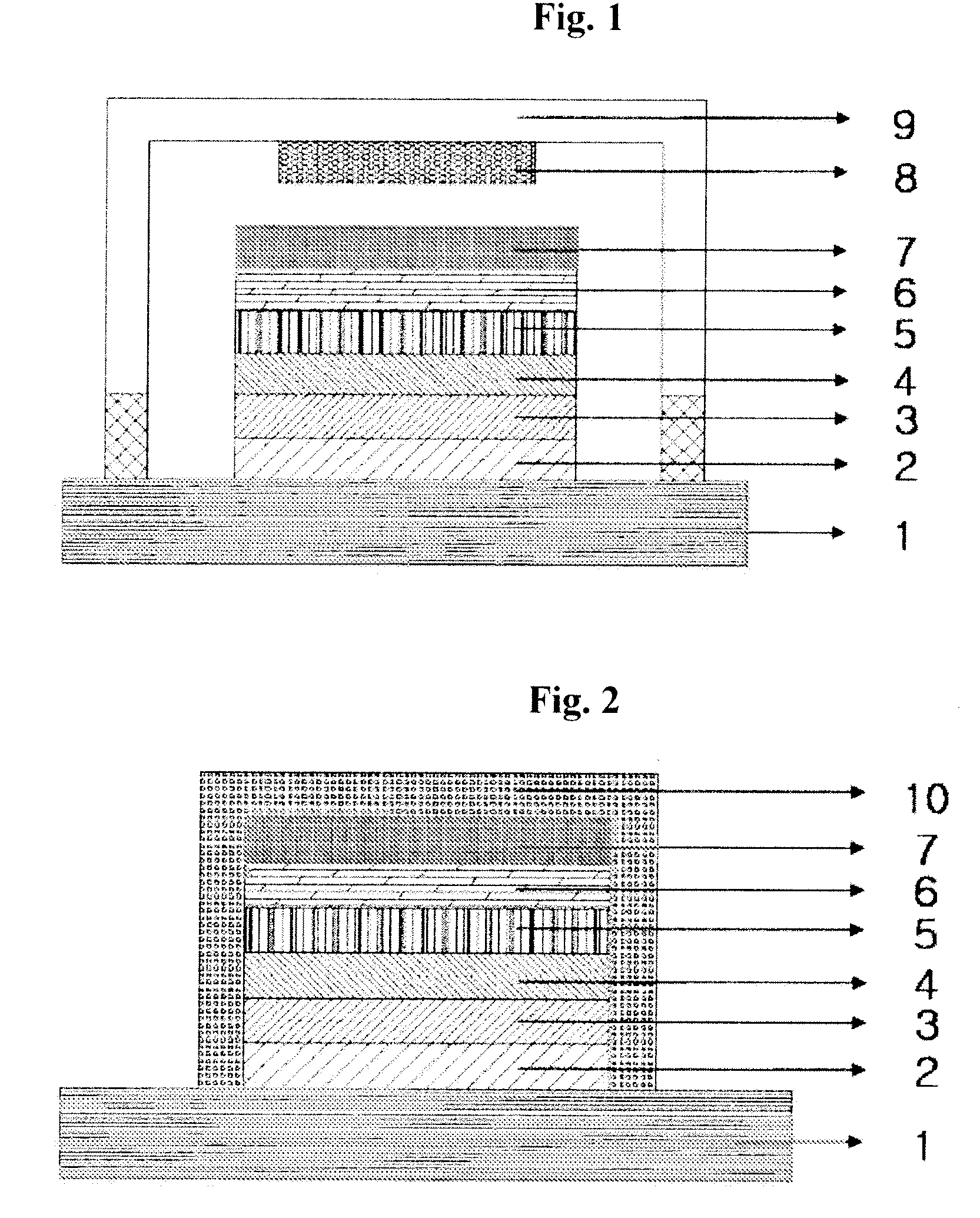Organic/inorganic hybrid thin film passivation layer for blocking moisture/oxygen transmission and improving gas barrier property
a technology of organic/inorganic hybrids and passivation layers, which is applied in the direction of electroluminescent light sources, transportation and packaging, electric lighting sources, etc., can solve the problems of inability to completely block moisture and oxygen transmission, low durability against heat, and decrease in lifetime, so as to improve the gas barrier property of plastic substrates, effectively block oxygen and moisture transmission, and ensure stability and reliability
- Summary
- Abstract
- Description
- Claims
- Application Information
AI Technical Summary
Benefits of technology
Problems solved by technology
Method used
Image
Examples
Embodiment Construction
[0024]The organic / inorganic hybrid thin film passivation layer according to the present invention is characterized as including an organic polymer passivation layer made of a photocurable polymer according to a UV / ozone curing process and an inorganic thin film passivation layer prepared by using a nanocomposite material containing at least two inorganic materials and having a up-and-down laminated structure of the organic polymer passivation layer and inorganic thin film passivation layer.
[0025]In particular, the organic / inorganic hybrid thin film passivation layer according to the present invention may be fabricated by the following steps:[0026]1) coating an organic electronic device fabricated on a substrate or the top or both the top and bottom of a plastic substrate with a photocurable polymer;[0027]2) curing the coated photocurable polymer by UV / ozone (UV / O3) irradiation to form an organic polymer passivation layer; and[0028]3) depositing a nanocomposite material containing at...
PUM
| Property | Measurement | Unit |
|---|---|---|
| thickness | aaaaa | aaaaa |
| wavelength range | aaaaa | aaaaa |
| wavelength range | aaaaa | aaaaa |
Abstract
Description
Claims
Application Information
 Login to View More
Login to View More - R&D
- Intellectual Property
- Life Sciences
- Materials
- Tech Scout
- Unparalleled Data Quality
- Higher Quality Content
- 60% Fewer Hallucinations
Browse by: Latest US Patents, China's latest patents, Technical Efficacy Thesaurus, Application Domain, Technology Topic, Popular Technical Reports.
© 2025 PatSnap. All rights reserved.Legal|Privacy policy|Modern Slavery Act Transparency Statement|Sitemap|About US| Contact US: help@patsnap.com



